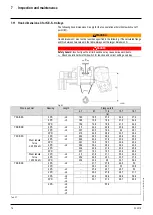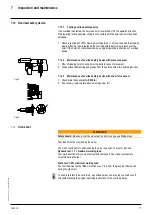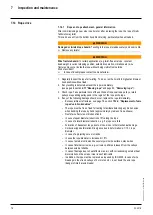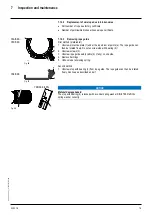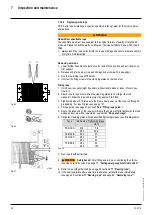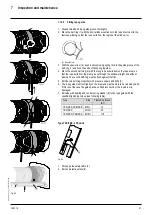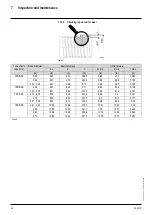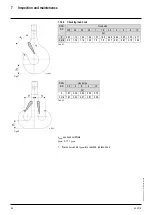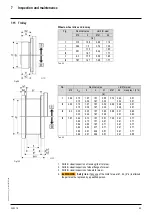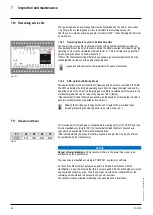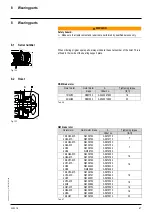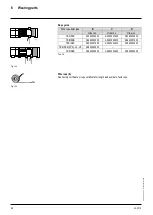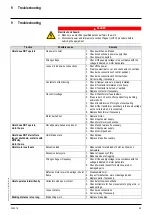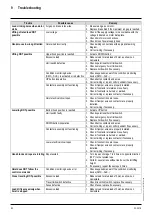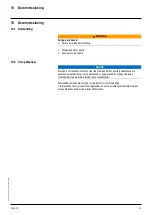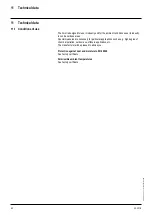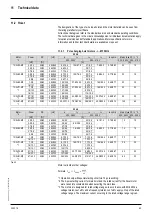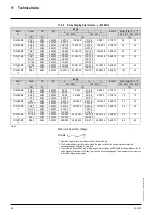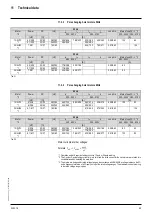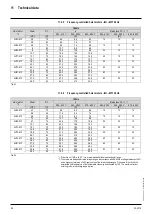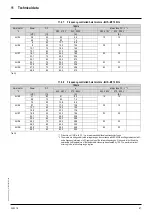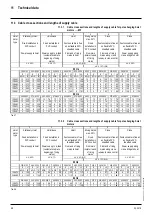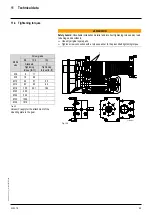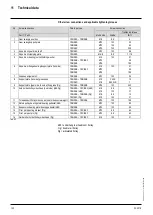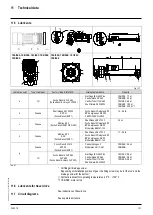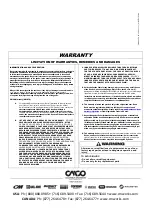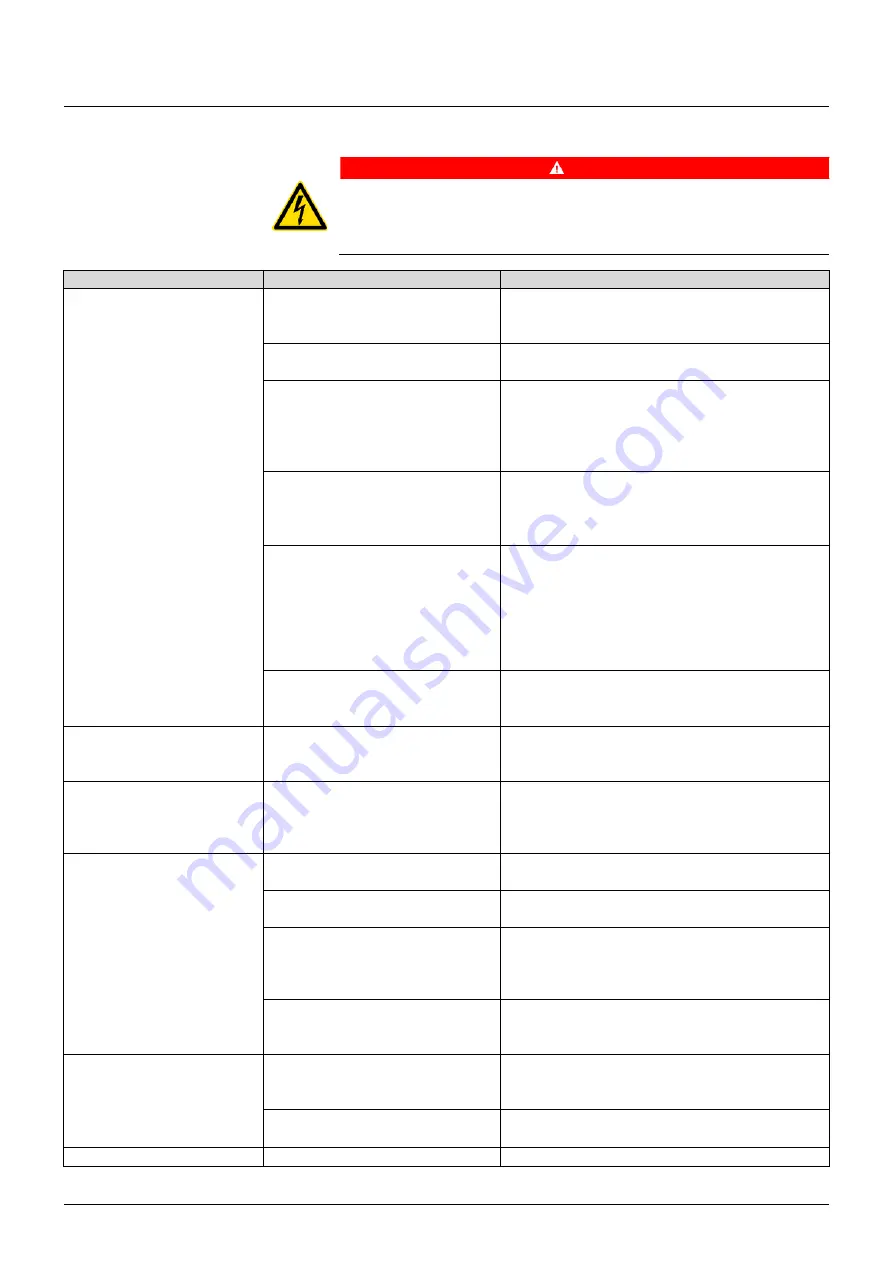
9
Troubleshooting
03.2018
89
ba
-o
.2
.6
.0
-us
-1.
1-
y
|
A
11
86
75
01
R
ev
A
A
9
Troubleshooting
DANGER
Electric shock hazard
.
➢
Make sure an electrical qualified person performs the work.
➢
Disconnect power and implement a Lockout/Tagout (LOTO) procedure before
servicing the equipment.
Trouble
Possible cause
Remedy
Hoist does NOT operate
No power to hoist
1.
Check switches, and fuses.
2.
Check connections in power supply lines.
3.
Check power collectors.
Wrong voltage
1.
Check if the supply voltage is in accordance with the
voltage indicated on motor data plate.
Loose or broken wire connections
1.
Shut off the power.
2.
Remove electrical cover, and check wire connections.
3.
Check wire connections of control pendant.
4.
Check wire connections of limit switches.
5.
Correct wiring if necessary.
Contactor not functioning
1.
Check if jumper wires are properly installed.
2.
Check if contactor armatures move freely.
3.
Check if contactor is burned or welded.
4.
Replace contactor if necessary.
No control voltage
1.
Check if transformer fuse is blown.
2.
If fuse is burn, check control pendant for grounding
and/or shorts.
3.
Check transformer coil for signs of overheating.
4.
Check if the transformer secondary is the same voltage
as the coils to which it is connected.
5.
Replace transformer if necessary.
Motor burned out
1.
Replace motor.
2.
Check input power supply.
3.
Check hoist motor connections.
Hoist does NOT operate,
motor hums
Not all power phases are present
1.
Check fuses, replace if necessary
2.
Check input power supply.
3.
Check control pendant.
Hoist does NOT start after a
longer shutdown, or starts with
difficulty,
motor hums.
Hoist brake stuck
1.
Check brake.
2.
Replace brake if necessary.
Hoist motor overheats
Excessive load
1.
Reduce load to rated load of hoist, as shown on
nameplate.
Excessive duty cycle
1.
Reduce frequency of lifts.
2.
Reduce amount of jogging.
Wrong voltage or frequency
1.
Check if the supply voltage is in accordance with the
voltage indicated on motor data plate.
2.
Check hoist and inspect for defective, worn or
damaged parts.
Defective motor or worn bearings in hoist
frame
1.
Disassemble hoist.
2.
Inspect for defective, worn or damaged parts.
3.
Replace parts if necessary.
Hoist operates intermittently
Collectors make poor contact
1.
Check electrical connections.
2.
Check collectors for free movement of spring arms, or
weak springs.
Loose contacts
1.
Check wire connections.
2.
Correct wiring if necessary.
Braking distance is too long
Brake lining worn
1.
Replace brake disk.


